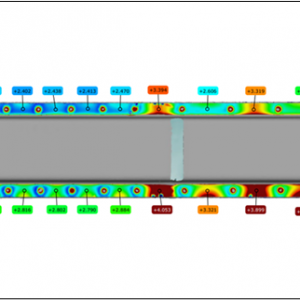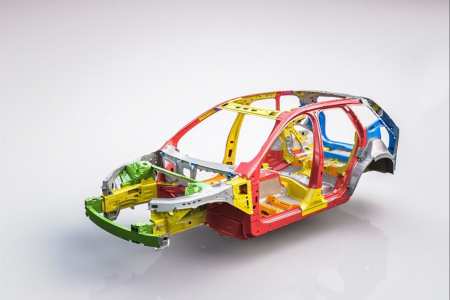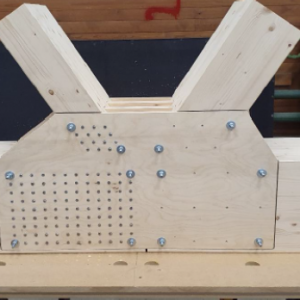Modeling of adhesive bonding for multi-material design – MADBOND
The project will create a digital tool for solving the largest issue in multi-material design: the Δα-issue.
2020 – 2023


Project time: 2020 – 2023
Budget: 7 760 000 kr
Difficulties in joining are often a limiting factor for vehicle manufacturers during product weight reduction.
The aim of JODIMACO is to enable efficient and robust joining of aluminium to ultra-high strength steel in car bodies, which is a requirement for realising e.g. lighter electric vehicles with longer range and maintained collision safety.
The goal is to achieve joining of multi-material combinations which cannot be welded or joined by traditional multi-material processes, e.g. SPR (self-piercing riveting) or FDS (flow drill screwing). A major limitation of SPR and FDS is the inability of the processes to penetrate ultra-high strength steel, over 600 MPa, during joining to aluminium details. Interesting material combinations within the automotive industry, which will be investigated, include cast and extruded aluminium to boron steel. The processes EJOWELD (from EJOT) and SPACPLUG (from RB&W) will be examined more thoroughly. Joinability, the effect of incorporation of adhesive and robustness will be key aspects for the project. The component approach of the project will facilitate in implementation and enable flexible production systems, with high quality assurance, cost effectiveness and manufacturing of products with high lifecycle effectiveness.
The consortia consist of companies and individuals with great knowledge throughout the production chain, and include material manufacturers, joining solution suppliers and Original Equipment Manufacturer. Relevant joining solutions will be implemented in a test environment (Testbed Joining), joining methodology and guidelines will provide a foundation to future internal technical standards. Component demonstrators joined according to the methodology generated will be part of the project deliverables.
The project will create a digital tool for solving the largest issue in multi-material design: the Δα-issue.
2020 – 2023

Building systems for timber structures, which reduces construction cost and climate impact.
2021 – 2024

Robust bolted joints for electrical vehicles
2019 – 2022
Robust laser welding of aluminium by using innovative laser welding tools and prediction models to avoid cracking and distortions
2017 – 2020
Better work instructions for more efficient and inclusive work
2022 – 2025
The aim of the present project is to develop a prediction tool for laminated veneer products (LVPs) to make it possible for the industry to improve product performance by reducing rejects and customer complaints and reducing time from idea to market by means of a tool to simulate LVP performance.
2019 – 2021
The project resulted in a supportive tool for collaboration projects with the purpose of developing robust production equipment with high production efficiency in combination with low operational and maintenance costs.
2013 – 2016
The project's goal is the circular use of plastic in cars through reuse and recycling.
2023 – 2025

The overall goal of DiSAM is to create a unique test AM Hub in Sweden for metal and polymer based additive manufacturing processes.
2017 – 2021
Hybrid joints, combination of gluing and mechanical joining are highly demanded where several materials are to be used and assembled. HJT therefore focuses on the smart factory's ability to create flexible production with simulation and programming in a digital twin that combines the latest technology for bonding, assembly and mechanical joining, rheology based simulation and automated collision-free planning. The projects goal is to focus on the whole hybrid joining process and to establish a testbed for hybrid joining as a resource for Swedish Industry.
2017 – 2020